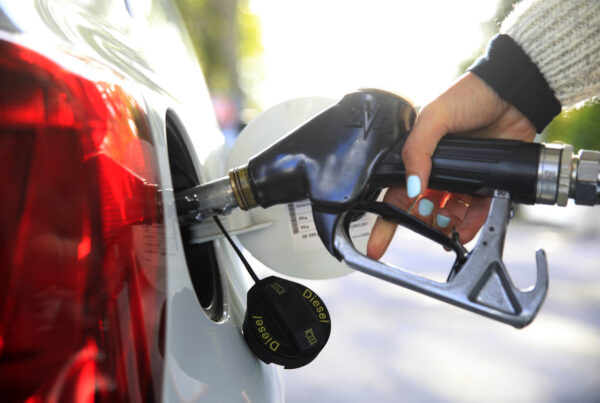Electric vehicles are continuing to transform the automotive landscape, offering a cleaner and more sustainable mode of transportation. As of October 2023, 71,800 EVs have been sold in Australia and as adoption rises, so do concerns and misconceptions surrounding electric vehicle fires.
Let’s debunk common myths surrounding EV fires, separating fact from fiction to foster a clearer understanding of the real risks associated with electric vehicles.
Myth 1: EV Fires are Frequent and Widespread
Fact: EV fires aren’t as rampant as you might think. According to EV FireSafe, an Australian firm that received seed funding from the Australian Department of Defence to research electric vehicle high voltage battery fires & emergency response, there had only been 393 verified fires globally, out of some 30 million electric vehicles on the road between 2010 and June 2023.
Over the same period in Australia, only four EV battery fires have occurred, and one was linked to arson. According to reports, the other three vehicles were parked in structures that burned down so the fires did not necessarily start in the batteries.
Myth 2: EVs Pose a Higher Risk in Accidents Due to Their Batteries.
Fact: The batteries in electric vehicles are built with robust protective structures and are typically positioned in a way that minimises the risk of damage during a collision. Moreover, many EV manufacturers conduct extensive crash testing to ensure the safety of the battery and overall vehicle structure in various accident scenarios.
Myth 3: All EV Fires are Caused by Battery Failures
Fact: While battery failure can contribute to EV fires, numerous factors come into play. External factors like collisions, manufacturing defects, improper handling or charging, rare battery failures, and human error can all play a role.
Modern EVs are equipped with advanced safety features, including Battery Management Systems and thermal runaway management, to minimise risks. Strict regulatory standards also ensure compliance with safety requirements. Understanding the multifaceted nature of EV fire risks is crucial for fostering an accurate perception of electric vehicle safety.
Myth 4: EV Batteries Can Spontaneously Combust
Fact: Electric vehicle batteries are designed with multiple layers of protection to prevent thermal runaway and combustion. Modern EVs use advanced lithium-ion batteries with built-in management systems that monitor temperature, voltage, and current. In the rare event of a thermal issue, these systems can take corrective action to prevent a fire.
Myth 5: EVs are More Likely to Catch Fire in Extreme Weather Conditions
Fact: Electric vehicles undergo rigorous testing, including exposure to extreme temperatures, to ensure their safety in various weather conditions. While extreme temperatures can affect battery performance, modern EVs are equipped with thermal management systems to regulate battery temperature and prevent issues related to overheating.
Myth 6: EV Fires are Impossible to Extinguish
Fact: While electric vehicle fires may require specialised knowledge and equipment, they are not impossible to extinguish. Firefighters receive training on handling EV incidents, and emergency response teams are equipped with the necessary tools to address battery-related fires. Additionally, manufacturers collaborate with first responders to develop effective strategies for managing EV-related incidents.
Myth 7: EV Fires are More Likely During Charging
Fact: Electric vehicle charging systems are designed with safety in mind, and the risk of a fire during charging is extremely low. EV manufacturers adhere to strict safety standards, and charging infrastructure providers implement safety features, such as thermal monitoring and automatic shut-off mechanisms, to prevent potential issues during charging.
Myth 8: The Lifespan of An EV Battery Significantly Increases the Risk of a Fire
Fact: While the performance of an electric vehicle battery may degrade over time, this does not significantly increase the risk of a fire. Battery management systems in EVs monitor and manage the condition of the battery, and most EVs come with warranties that cover the battery for an extended period. The likelihood of a fire is minimal if the vehicle is properly maintained.
Myth 9: EV fires are Silent and Difficult to Detect
Fact: Contrary to this myth, electric vehicle fires produce audible alerts and visual cues. Modern EVs are equipped with advanced safety systems that can detect abnormalities in the battery or other components, triggering alarms to alert the driver. These alerts provide ample warning, allowing drivers to take preventive actions and emergency responders to address potential issues.
Myth 10: Electric Vehicle Fires are More Likely in the Event of a Minor Collision
Fact: Electric vehicles, like traditional vehicles, are subject to stringent safety standards, and their designs prioritise occupant safety in the event of a collision. Minor fender-benders are unlikely to cause a fire in an EV. Manufacturers implement safety features such as automatic disconnects of the battery in case of a collision to mitigate potential risks.
EVs, like any technology, come with their own set of safety considerations. While EV fires can be concerning, understanding the facts is crucial for fostering confidence in the future of clean and sustainable transportation.
Did you find this article interesting? Give it a ‘like’ by clicking the ‘heart’ button above




















